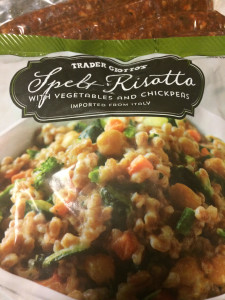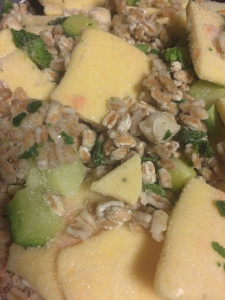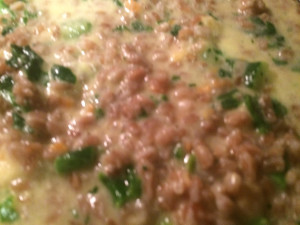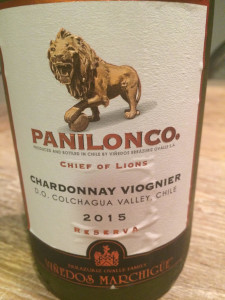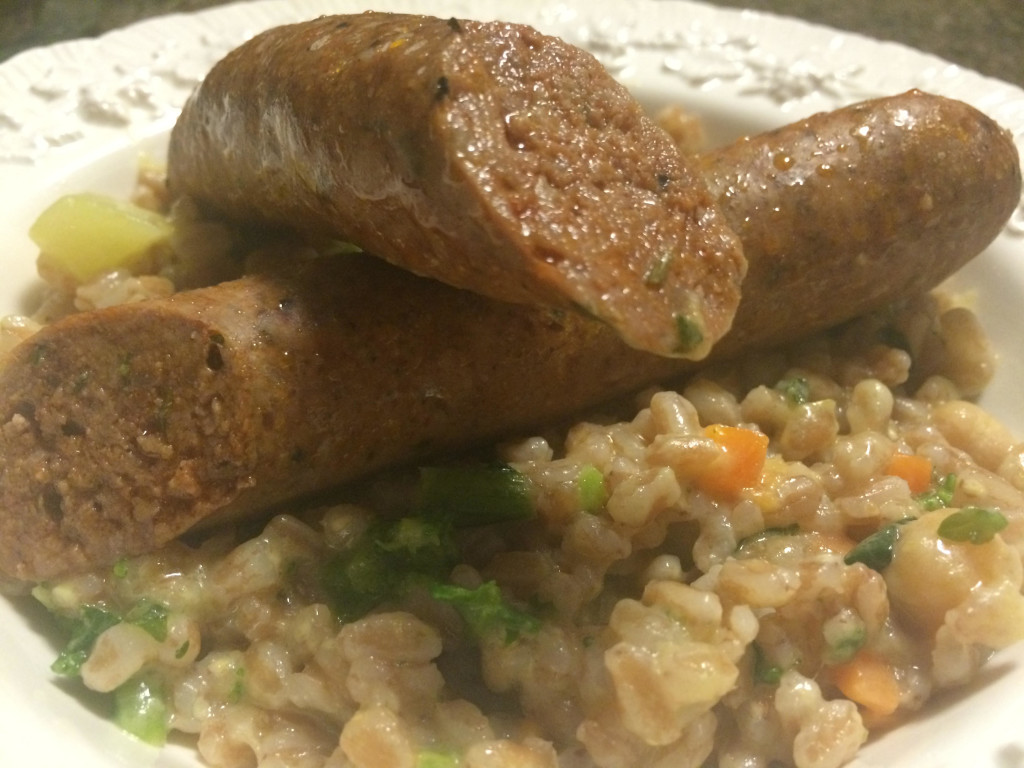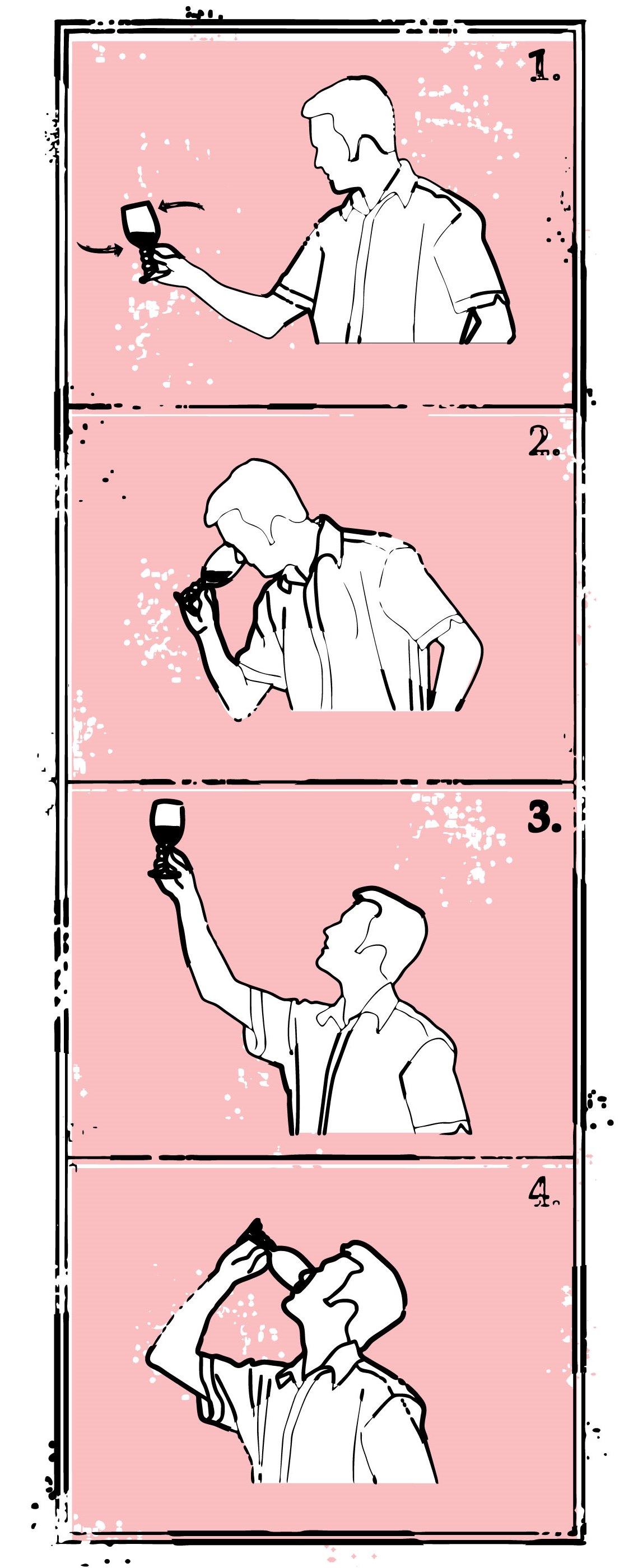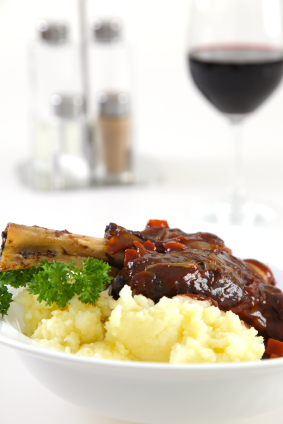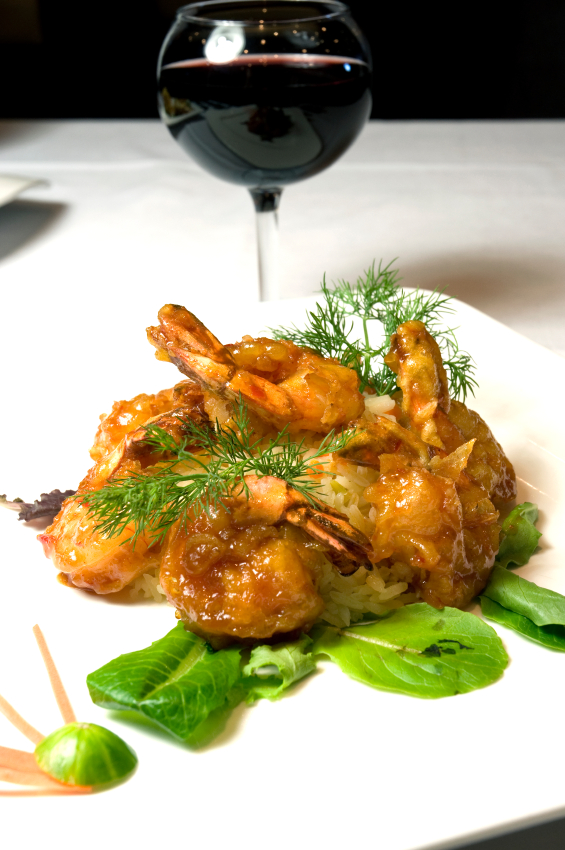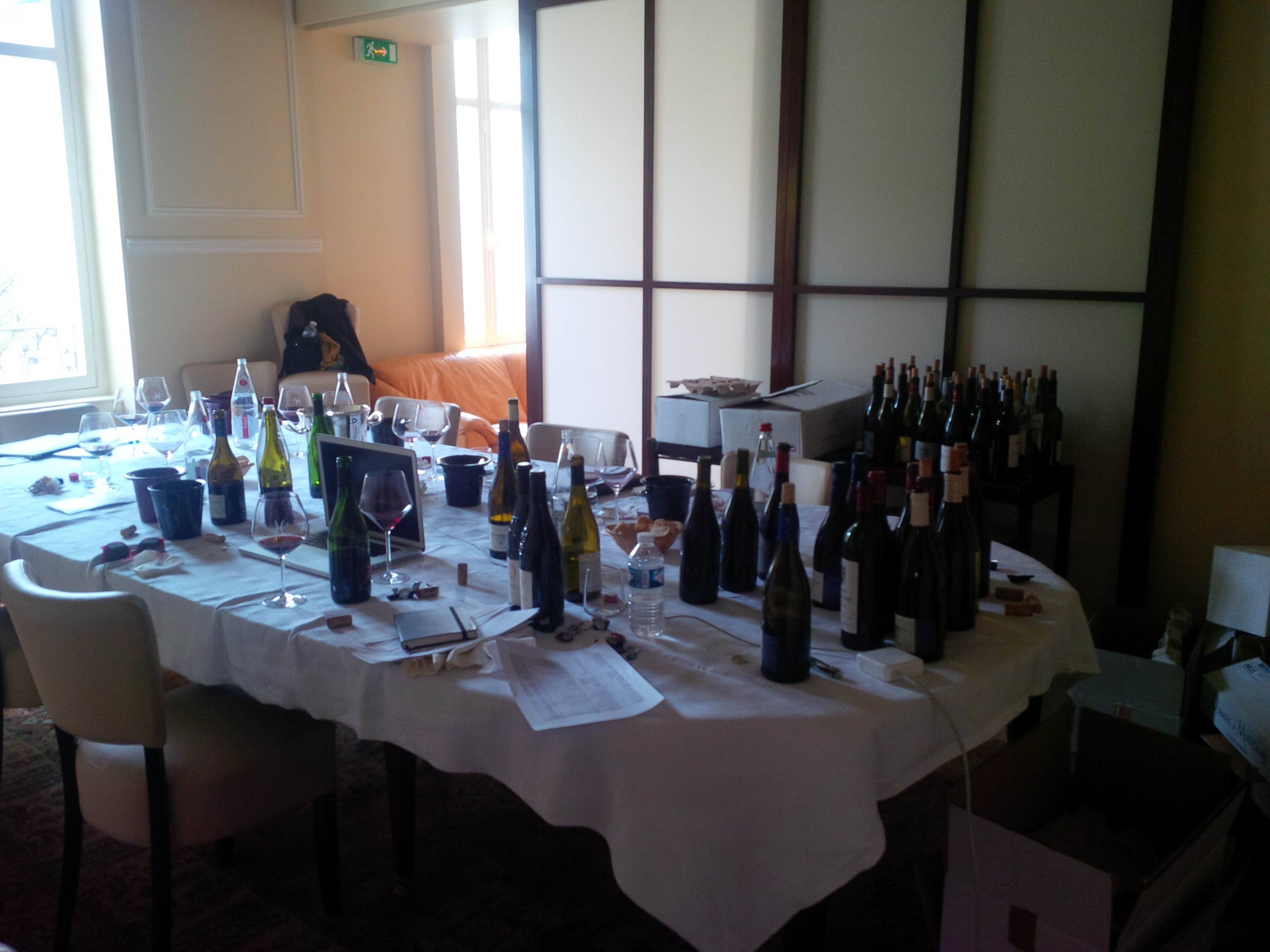A number of my students have asked me what I think of the wines from Trader Joe’s and honestly, I had never even walked into the store despite living about a five minute walk away from the 14th Street Manhattan store. Too crowded.
Now I’m living in south Florida with my man who loves the stores (and not just because his name is Joe). We went to our local one down here and I was surprised by the wine selection (it’s not Two Buck Upchuck afterall!) Encouraged, I started perusing the grocery store and was impressed with their own-branded foodstuffs as well.
The idea struck me to pair one of their value wines with one of Trader Joe’s own meals. We started with Spelt Risotto with Vegetables and Chickpeas, and Panilonco Chardonnay/Viognier Reserva 2015.
About the Dish
So it turns out that spelt (aka farro) has something to do with wheat. Of course, my wonderfully athletic boyfriend knew that and was already familiar with spelt – I’m not sure I’ve ever consciously had it. Unless this is the stuff that they make Honey Smacks out of. Am I right?
So we went with the stove top instructions (microwave instructions were also available).
Out of the bag it’s an interesting blend of pumpkin, zucchini, turnip greens, chickpeas and provola cheese. See those big chunks? That’s the cheese. In a traditional risotto, the rice starch released during the cooking helps to make the risotto amazing creamy. Spelt, which is a species of wheat, has the chewy texture expected in an excellent risotto, but doesn’t release much liquid on its own. Enter: cheese. The chunks melted into a sauce that glued the ‘risotto’ together without completely overpowering the veggies. Brilliant.
Despite the title, there were only a few chickpeas in the mix, but those little guys played the important role of adding a more tender texture to the chewy bite of the spelt. The chucks of veggies also provided a (slightly more watery) point of difference from the chewy spelt.
About the Wine
80% Chardonnay, 20% Viognier from Colchagua Valley, Chile; 13.5% abv; $3.99
Viognier can show some pretty exotic aromas and is relatively full-bodied, which is what I had in mind to a) contrast against the fall vegetable mix and b) match the weight of the spelt.
Pale yellow color with an expressive nose of peaches, apricot, and exotic musk (like ginger and maybe cheese rind). It really had a fuller body with round acid well-integrated 13.5% alcohol and a moderate finish of fresh, ripe orchard fruits. Overall it was more expressive on the nose than on the palate, but the clarity and freshness of the fruits made this a pretty darn good wine for $3.99!
About the Pairing:
I don’t want to brag or anything, but this pairing worked out pretty well.
The dish on its own is a bit woodsy overall, with some bitter bites from the turnip greens. If anything, it was lacking a bright (acid) note. Interestingly, the acid in the wine (likely due to the climate and addition of Viognier) was only moderate at best, but that moderate was just enough to play nice with the dish. What I mean is if the acid was any higher in the wine, it would have been too much of a contrast with the dish. As expected, the relative full body of the wine really echoed the toothsome chew of the ‘risotto’.
My original thought for pairing was an Alsace Pinot Gris, but that fresh, fruity contribution from the Viognier was just what this dish needed.
Note:
As a girl from the Midwest, I pretty much require an animal protein at every meal. We tossed in lamb merguez from Smitty’s, which I thought would pair with the exotic Viognier and veggies in the risotto. The merguez was spicy (exotic) and spicy (heat!) and while amazing on its own, it did stick out in terms of its concentration of flavors relative to the risotto and wine. I think I would crumble the sausage and incorporate like that next time (or really, find a more mild sausage).

